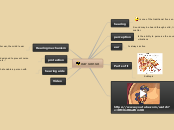Epithelial
Muscle Tissue
Nerve Tissue
support the cells
Neurons transmit signals
skeletal
cardiac Muscle
smooth tissue
Connective
bone
Blood Tissue
cartilage
Fibro
between the vertebrate
tough, shock absorbing
Elastic
External ear and larynx
Hyaline
cells are called chondrocytes
Fibrous Tissue
Ligaments= bones to bones
Tendons= muscles to bones
Adipose Tissue(fat)
insulation to preserve body heat
stores energy
protective tisssue
Loose tissue or Areolar tissue
Subopic
Loose Tissue
forms delicate thin membranes throughout the body
binds underlying organs to skin and to each other
Glandular Epithelium
saliva
make up glands
cells are specialized to secrete substances
Transitional Epithelium
transitional Epithelium
urinary bladder
blocks diffusion
stretchable
Pseudostratified columnar
lining air passages and tubes of reproductive system
secreation and cillia aided movement
can have cillia, goblet cellls, and secrete mucus
appear stratified, single layer of cells, nuclei different levels
stratified squamous
Subtopic
stratified Columnar
used for protection and mucous secretion
inside the eyelids and areas of tissue transition
stratified cuboidal
uses for reinforcement
sweat glands
thin, two to three layers
lining body cavities and skin and the mouth
multi layer squamous functions in protection
simple
simple columnar
scattered goblet cells to secrete mucus
digestive tract and uterus
simple cuboidal
secretion and absorption
kidneys, tubules,ducts, and covering the ovaries
simple squamous
single layer
flat and thin
diffusion and filtration
air sacs in the lungs and capillaries









